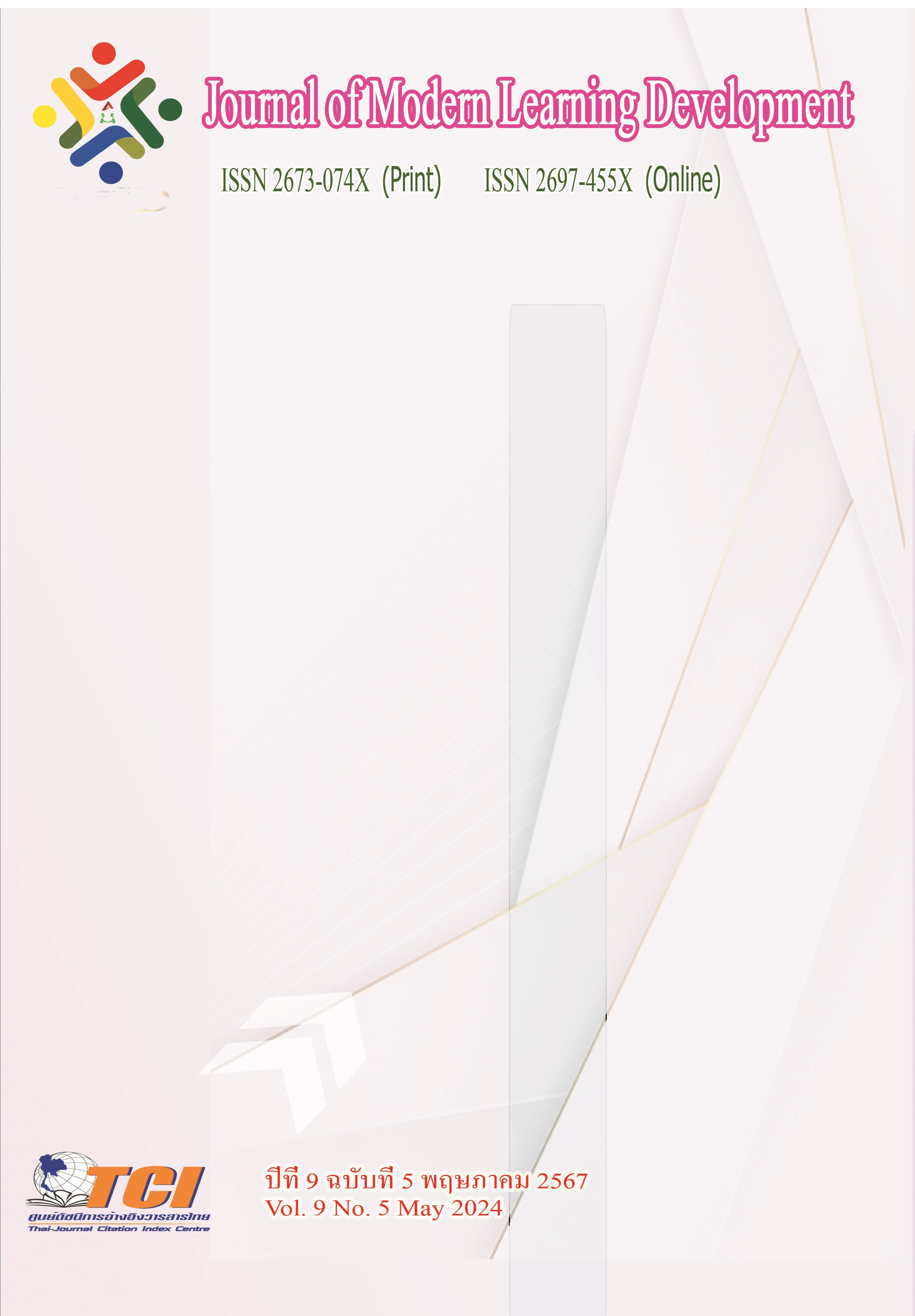Human Resource Management Innovation in the Digital Age for the Government Sector
Main Article Content
Abstract
When the world had changed more and more in technology, it was considered as an era of transition to digital age and in order to achieve success as the organization aims, this article therefore proposed to study the human resource management innovations in the digital age for the government sector.It was found that the management of human resources in the digital age for the government sector was developed by bringing technology to connect together; using the internet network, an application system to manage and develop human resources in the government sector such as Telepresence, Web Conference, Social media system, etc.The government organizations could use technology to manage and develop, resulting in convenient, faster and more modern work, which leaded to efficiency and effectiveness accordingly.
Article Details
References
กรมส่งเสริมการปกครองท้องถิ่น. (2566). แผนปฏิบัติการด้านดิจิทัล (พ.ศ. 2566 -2568). กรุงเทพมหานคร : กระทรวงมหาดไทย.
กรมสรรพากร. (2566). รายงานผลการดำเนินงานตามแผนปฏิบัติราชการกรมสรรพากร รอบ 6 เดือน ประจำปีงบประมาณ 2566. กรุงเทพมหานคร : กระทรวงการคลัง.
การไฟฟ้าฝ่ายผลิตแห่งประเทศไทย. (2566). แผนแม่บทนวัตกรรมการไฟฟ้าฝ่ายผลิตแห่งประเทศไทย พ.ศ. 2566-2570. กรุงเทพมหานคร : การไฟฟ้าฝ่ายผลิตแห่งประเทศไทย.
ธนาคารกสิกรไทย. (2566). กสิกรไทยกับพัฒนาการในยุคดิจิทัล ผ่าน Startup อย่าง Skill Line. ออนไลน์. สืบค้นเมื่อ 24 กรกฎาคม 2566. แหล่งที่มา https://www.kasikornbank.com/th/personal.
นิสดารก์ เวชยานนท์. (2554). การบริหารทุนมนุษย์เชิงกลยุทธ์เพื่อเพิ่มมูลค่า. กรุงเทพมหานคร : โกลเด้นท์ไทม์พริ้นติ้ง.
ประเวช ชุ่มเกษรกูลกิจ, ศจีมาจ ณ วิเชียร.(2561) พฤติกรรมสร้างนวัตกรรมในการทำงาน แนวคิดปัจจัยเชิงสาเหตุ ความท้าทาย. วารสารพฤติกรรมศาสตร์เพื่อการพัฒนา สถาบันวิจัยพฤศาสตร์ มหาวิทยาลัยศรีนครินทรวิโรฒ. (10), 25-41.
ปัญญา เลิศไกร, นิลรัตน์ นวกิจไพฑูรย์, ลัญจกร นิลกาญจน์, กฤตพร แซ่แง่ สายจันทร์. (2562). การจัดการนวัตกรรมการพัฒนาองค์กร. วารสารมหาจุฬานาครทรรศน์, มหาวิทยาลัยจุฬาลงกรณ์ราชวิทยาลัย. 6 (8), 3745-3757.
พงศกร เอี่ยมสะอาด, ศุภกร ลิ้มคุณธรรมโม และประสพชัย พสุนนท์. (2559). ปัจจัยความเป็นองค์การแห่งการเรียนรู้และนวัตกรรมองค์การที่มีอิทธิพลต่อการดำเนินงานของอุตสาหกรรมที่ใช้แรงงานเข้มขน กรณีศึกษาจังหวัดสมุทรสาคร. วารสารการจัดการสมัยใหม่. 14(1), 130-142.
สนั่น เถาชารี. (2551). กลยุทธ์การบริหารความเสี่ยงด้านทรัพยากรบุคคลเพื่อความสำเร็จขององค์กร. Industrial Technology Review. 18(7), 145-151.
สมบัติ นามบุรี . (2562). นวัตกรรมและการบริหารจัดการ. วารสารวิจัยวิชาการมหาวิทยาลัยรัตนบัณฑิต. 2(2), 121-134.
สำนักงานคณะกรรมการพัฒนาระบบราชการ. (2560). ระบบราชการ 4.0 ยึดหลักธรรมาภิบาลเพื่อประโยชน์สุขของประชาชน. ออนไลน์. สืบค้นเมื่อ 24 กรกฎาคม 2566. แหล่งที่มา www.opdc.go.th.
อนันต์ แก้วร่วมวงศ์. (2559). Thai innovation. กรุงเทพมหานคร: ซีเอส ล็อกซอินโฟ.
Li, Q. (2564). ความสัมพันธ์เชิงสาเหตุของปัจจัยการสร้างสรรค์นวัตกรรมจากงานประจำที่ส่งผลต่อประสิทธิภาพการปฏิบัติงานของบุคลากรสายสนับสนุน มหาวิทยาลัยราชภัฏเชียงใหม่. (รายงานการวิจัย). เชียงใหม่ : วิทยาลัยนานาชาติ มหาวิทยาลัยราชภัฏเชียงใหม่.
Guzman, G. M. d., Neelankavil, J. P., & Sengupta, K. (2011). Human resources roles : Ideal versus practiced: A cross-country comparison among organizations in Asia. The International Journal of Human Resource Management, 22(13), 2665-2682.
Harris, L. (2007). The changing nature of the HR function in UK local government and its role as employee champion. Employee Relations, 30(1), 34-47.
Schilling, M.A. (2008). Strategic Management of Technological Innovation. New York : McGraw-Hill Education.


